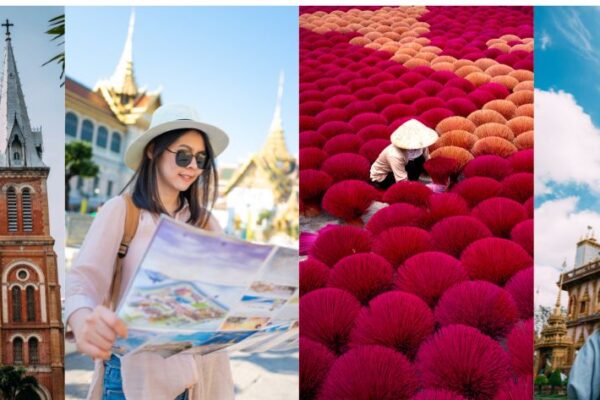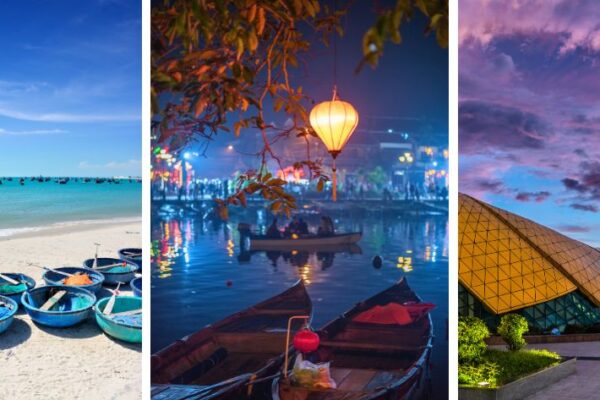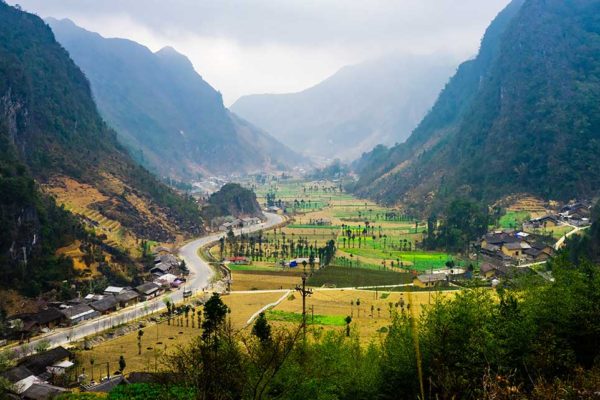A Full Guide To Conquer The Ha Giang Loop

The Ha Giang loop is an absolutely breathtaking destination in the northern region of Vietnam. The road winds through awe-inspiring mountain passes and stunning canyons, making it a must-visit location for adventurous travelers seeking the ultimate thrill of the open road. The popularity of Ha Giang has recently skyrocketed on social media, piquing the curiosity of both international and local travelers.
The only way to discover the most incredible scenery on the Ha Giang Loop is by riding a motorcycle. Before you hit the road, it’s crucial to read up on everything you need to know about conquering the famous loop. The comprehensive guide below will get you covered with all the essential details on routes, paperwork, and insider tips. Don’t miss out on this exhilarating experience of a lifetime!
How Does The Ha Giang Loop Become So “Hot”?
Nestled in the northernmost part of Vietnam, Ha Giang province beckons with its untamed and awe-inspiring landscapes. Its rugged beauty offers a glimpse into a bygone era, making it an ideal destination for those seeking a journey through time. Unlike popular northern Vietnam destinations such as Sapa or Cao Bang, Ha Giang remains a remote haven, unspoiled by crowds of tourists.

You can savor Ha Giang’s incredible sights in solitude
Ha Giang’s topography is quite complex, consisting of three distinct regions: rocky highlands in the north, western highlands, and low mountains. This diversity in terrain results in a rich variety of flora and fauna, ranging from subtropical forests to timber and fruit tree lands.
Not only that, Ha Giang is where 43 ethnic groups live, each has their own language, traditions, and subculture. The largest ethnic groups are Mông, Tày, Dao, Kinh, Nùng, Giáy, and La Chí. The people here are not very familiar with the presence of travelers, but they are very friendly and willing to help and make friends.
We recommend embarking on a road trip with a two-wheeled vehicle to fully appreciate all that Ha Giang offers. This will allow you to take in the grandeur of the landscape and experience the unique local culture of the province’s outlying settlements and ethnic minority communities.
>> Read More: Discovery Of Ha Giang Loop 3 Days
What To Know Before Traveling To Ha Giang?
Ha Giang sounds like a perfect destination for adventures, but because of its complexity in topography and climate, as well as the changeable travel conditions, there are a few things to know ahead of your trip.
When To Go
February, May, October, and November are the best months to take on this loop, and here are the reasons why.
- February is when the flowers start blooming as the weather gets warmer. If you take on the loop during the latter half of February – begin of March, you can enjoy various flowers along the ride, like the light pink cherry blossoms, white plum blossoms, yellow wildflowers, etc. Also, since the temperature during the day may get over 20°C, you may be able to wear just a T-shirt and a light jacket on the ride.
- May is also an excellent month to travel to Ha Giang, with all the cold gone and many sunny days. This is when the terraced rice fields are filled with water. You will feel like they are glowing, making it a stunning sight to behold.
- October and November are probably the best time to visit Ha Giang with cool to mild cold weather. This is the harvest season. Imagine watching the golden rice fields, layers after layers, as far as the eyes can see, intertwining with the green dots of the forest. There’s no word that can describe such a breathtaking view. Adding to the beauty are the homes of the La Chi people, nestled into the hillsides. Hoang Su Phi is the most awe-inspiring area in which to see the golden terraces in Ha Giang.

Terraced fields in Hoang Su Phi, Ha Giang
Note
It is not advised to have the Ha Giang Loop during June, July, and August since these are the monsoon months. There will be heavy rains and often landslides. Also, these are the hottest months, so traveling on the loop for several hours might not be preferable.
How To Get To Ha Giang
Regular daytime and overnight buses depart from Hanoi’s My Dinh bus station for Ha Giang. Private transportation and tours are also available in Hanoi, either online or through tour agencies.
What To Bring
- Luggage: Carry the essentials like cash (ATMs or credit cards are not common in Ha Giang); underwear, t-shirts (for summer), warm clothes (for winter), a light/thick jacket (depending on the season), trousers, trainers/riding boots, flip flops, toiletries, wash kit, sunscreen, sunglasses, electronics, bug spray, etc., and anything else you feel is important.
- Riding Gear: Prepare by yourself or buy in Ha Giang. The must-haves are a full-face helmet, gloves, arm and knee pads, and essential raincoats.
How To Choose The Right Vehicle
Typically, you have 3 options for a motorcycle: automatic, semi-automatic, and manual.
The unique landscape of Ha Giang makes semi-automatic and manual motorcycles the best choice. They are lightweight and easy to use, giving you the best control, which is crucial when navigating mountain roads. If you are experienced with this type of transportation, a manual motorcycle is just as good as a semi-automatic one. However, if you are not experienced, it’s better to go for the semi-automatic option.
Motorcycle rentals are easily available in Ha Giang City with Honda and Kawasaki service centers in town.
Best Itinerary For A Ha Giang Loop Adventure
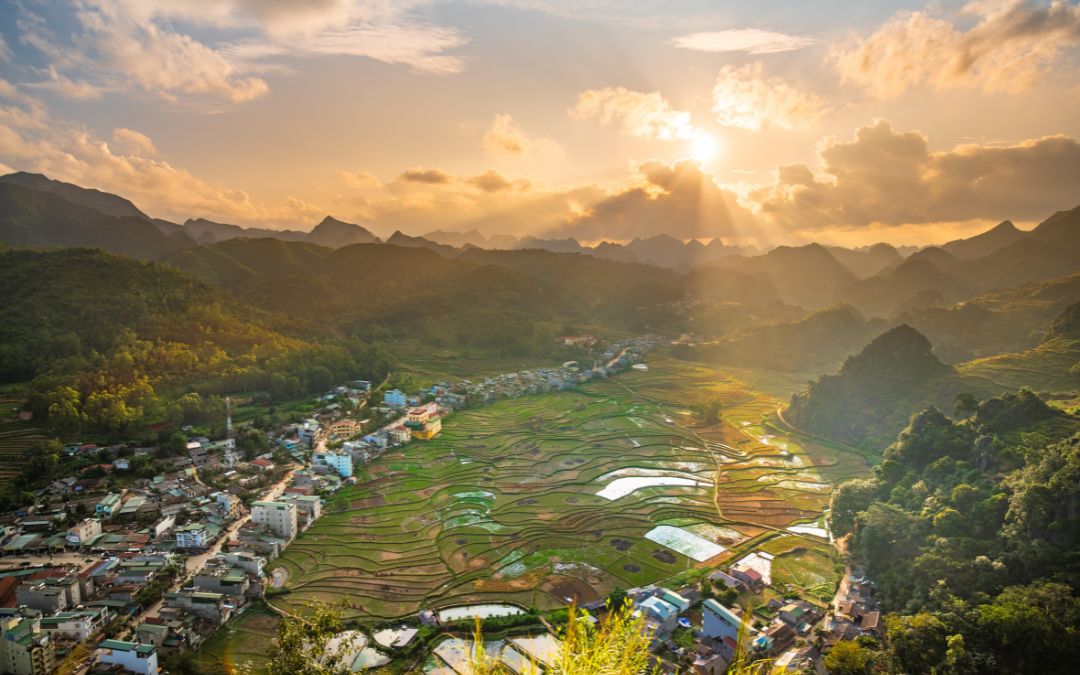
If you’re seeking an off-the-beaten-path adventure in Ha Giang, this 7-day itinerary promises a unique experience
Day 1: Hanoi – Ha Giang
Your journey begins as you depart from Hanoi and drive through picturesque rural landscapes towards Ha Giang. Along the way, you’ll pass lush rice terraces, rolling hills, and quaint villages. Upon arrival in Ha Giang, check into your cozy homestay in a local Tay village and enjoy a traditional dinner prepared by your hosts.
Highlights:
- Scenic drive through the Vietnamese countryside
- Overnight in a Tay ethnic homestay
- Experience local cuisine and hospitality
Day 2: Ha Giang – Quan Ba – Yen Minh
After breakfast, set off for Quan Ba, often referred to as “Heaven’s Gate” for its panoramic views over the misty mountains. Stop to admire the stunning Twin Mountains, a unique natural formation that symbolizes fertility and prosperity in the local culture. Continue your journey to Yen Minh, passing through scenic valleys and forests, where you’ll arrive by late afternoon. Spend the night in a local guesthouse or homestay.
Highlights:
- Heaven’s Gate and Twin Mountains
- Drive through picturesque valleys and pine forests
- Overnight stay in Yen Minh
Day 3: Yen Minh – Dong Van
Today’s adventure takes you deeper into Ha Giang as you travel to Dong Van, a historic town known for its ancient Hmong stone houses and vibrant markets. En route, visit Lung Tam Village, famous for its traditional Hmong textile weaving. In Dong Van, explore the Old Quarter and its unique stone architecture, and learn about the region’s fascinating history.
Highlights:
- Visit Lung Tam weaving village
- Explore Dong Van Old Quarter
- Discover ancient Hmong architecture
Day 4: Dong Van – Lung Cu Flag Tower – Ma Pi Leng Pass – Meo Vac
Start the day with a visit to the Lung Cu Flag Tower, Vietnam’s northernmost point, which offers panoramic views of both Vietnam and China. Afterward, brace yourself for one of the most awe-inspiring drives in Vietnam: Ma Pi Leng Pass. Known for its dramatic cliffs and deep valleys, this pass is a highlight of any Ha Giang tour. After a photo stop at the Nho Que River, descend into Meo Vac, a charming town surrounded by breathtaking landscapes. Here, you’ll have the chance to interact with local Hmong, Tay, and Dao people.
Highlights:
- Lung Cu Flag Tower visit
- Breathtaking Ma Pi Leng Pass drive
- Meet local ethnic minorities in Meo Vac
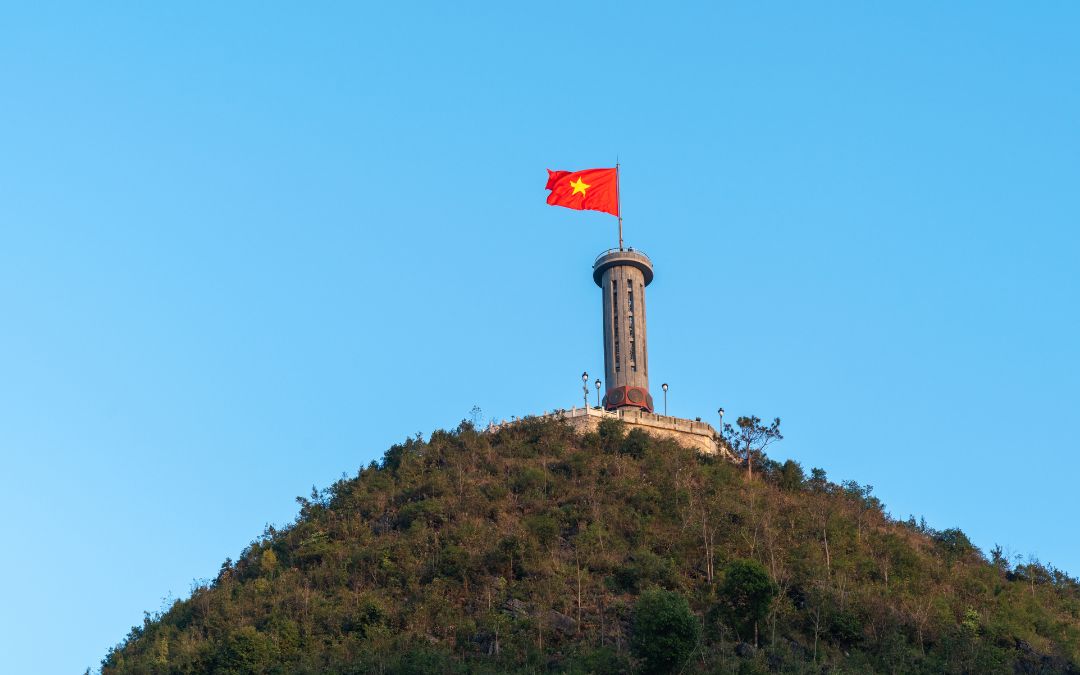
Lung Cu Flag Tower
Day 5: Meo Vac – Local Markets – Pa Vi – Du Gia
This morning, visit Meo Vac’s famous local market, where ethnic minorities from nearby villages gather to trade goods. The market is a colorful spectacle of traditional dress, food, and crafts, offering a rare insight into local culture. Then, head to Pa Vi Village, home to the Hmong people, for a deeper cultural experience. From here, continue your journey to Du Gia, a peaceful village nestled in the mountains, where you’ll spend the night in a traditional homestay.
Highlights:
- Visit Meo Vac’s vibrant market
- Cultural immersion in Pa Vi Village
- Overnight in Du Gia, a remote and serene village
Day 6: Du Gia – Lung Ho – Ha Giang
After breakfast, explore the tranquil beauty of Du Gia, known for its lush landscapes and serene atmosphere. Then, journey through Lung Ho Village, where you’ll pass by traditional homes and terraced fields. The drive back to Ha Giang will take you through more stunning scenery, with plenty of opportunities to stop for photos along the way. Return to Ha Giang for your final night in the province, staying in a comfortable hotel or homestay.
Highlights:
- Explore Du Gia’s untouched natural beauty
- Scenic drive through Lung Ho Village
- Overnight in Ha Giang
Day 7: Ha Giang – Hanoi
Say goodbye to Ha Giang as you embark on the drive back to Hanoi. Along the way, you can stop at viewpoints or local markets for one last taste of the region’s beauty and culture. Arrive in Hanoi by late afternoon, where your unforgettable journey through Ha Giang concludes.
Highlights:
- Scenic drive back to Hanoi
- Opportunity for last-minute sightseeing or market stops
This Ha Giang tour offers an immersive journey into one of Vietnam’s most remote and scenic regions. Travelers experience authentic cultural immersion in ethnic minority villages alongside breathtaking landscapes like the Ma Pi Leng Pass and Dong Van Karst Plateau. Adventure-seekers will love the winding mountain roads, while a mix of guided tours and free time allows for hiking, photography, and exploring at your own pace.
>> See Tour: Best Ha Giang Loop Tour 7 Days
Start Your Unforgettable Ha Giang Adventure with Asia Pioneer Travel
Asia Pioneer Travel, with over 14 years of experience, is your trusted partner for crafting tailor-made tours in Vietnam and beyond. Our deep understanding of travelers’ preferences ensures that every trip is carefully designed to provide exceptional experiences. We take pride in offering personalized, memorable adventures that have delighted countless travelers, many of whom recommend us to their friends and family.
Ready to embark on the adventure of a lifetime? Let Asia Pioneer Travel design your perfect Ha Giang tour and create memories that will last forever. BSecure your bespoke adventure today!

